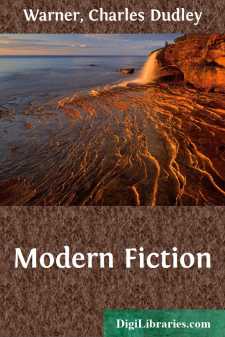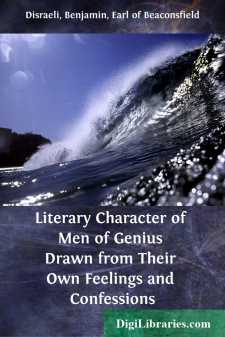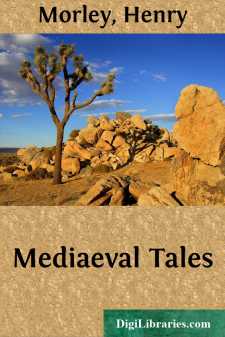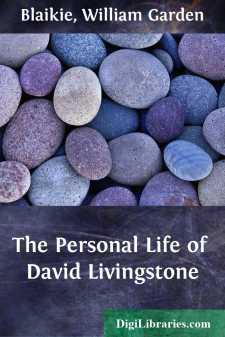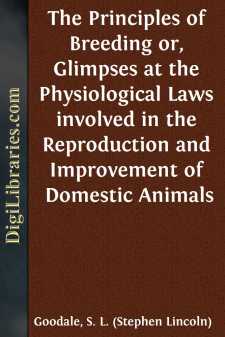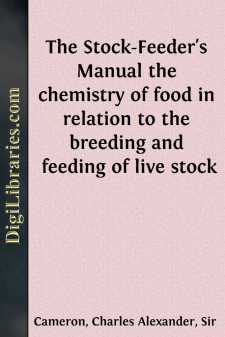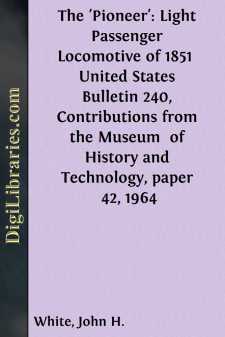Non-Classifiable
- Non-Classifiable 1768
Non-Classifiable Books
Sort by:
One of the worst characteristics of modern fiction is its so-called truth to nature. For fiction is an art, as painting is, as sculpture is, as acting is. A photograph of a natural object is not art; nor is the plaster cast of a man's face, nor is the bare setting on the stage of an actual occurrence. Art requires an idealization of nature. The amateur, though she may be a lady, who attempts to...
more...
INTRODUCTION. For the fifth time I revise a subject which has occupied my inquiries from early life, with feelings still delightful, and an enthusiasm not wholly diminished. Had not the principle upon which this work is constructed occurred to me in my youth, the materials which illustrate the literary character could never have been brought together. It was in early life that I conceived the idea of...
more...
BIOGRAPHICAL SKETCH The county of Franklin in Northwestern Massachusetts, if not rivaling in certain ways the adjoining Berkshire, has still a romantic beauty of its own. In the former half of the nineteenth century its population was largely given up to the pursuit of agriculture, though not under altogether favorable conditions. Manufactures had not yet invaded the region either to add to its wealth...
more...
CHARACTER SKETCHES OF ROMANCE, FICTION, AND THE DRAMA. Mark Tapley, a serving companion of Martin Chuzzlewit, who goes out with him to Eden, in North America. Mark Tapley thinks there is no credit in being jolly in easy circumstances; but when in Eden he found every discomfort, lost all his money, was swindled by every one, and was almost killed by fevers, then indeed he felt it would be a real credit...
more...
ANCIENT BABYLONIAN AND EARLY HEBREW. From the misty ages of bygone centuries to the present day there has been a gradual interlinking of the literatures of different countries. From the Orient to the Occident, from Europe to America, this slow weaving of the thoughts, tastes and beliefs of people of widely different races has been going on, and forms, indeed, a history by itself. The forerunner and...
more...
by:
Henry Morley
This volume of "Mediæval Tales" is in four parts, containing severally, (1) Turpin's "History of Charles the Great and Orlando," which is an old source of Charlemagne romance; (2) Spanish Ballads, relating chiefly to the romance of Charlemagne, these being taken from the spirited translations of Spanish ballads published in 1823 by John Gibson Lockhart; (3) a selection of stories...
more...
CHAPTER I. EARLY YEARS.A.D. 1813-1836.Ulva--The Livingstones--Traditions of Ulva life--The "baughting-time"--"Kirsty's Rock"--Removal of Livingstone's grandfather to Blantyre--Highland blood--Neil Livingstone--His marriage to Agnes Hunter--Her grandfather and father--Monument to Neil and Agnes Livingstone in Hamilton Cemetery--David Livingstone, born 19th March,...
more...
CHAPTER I. Introductory. The object of the husbandman, like that of men engaged in other avocations, is profit; and like other men the farmer may expect success proportionate to the skill, care, judgment and perseverance with which his operations are conducted. The better policy of farmers generally, is to make stock husbandry in some one or more of its departments a leading aim—that is to say, while...
more...
The CHEMISTRY OF FOOD. When Virgil composed his immortal "Bucolics," and Varro indited his profound Essays on Agriculture, the inhabitants of the British Islands were almost completely ignorant of the art of cultivating the soil. The rude spoils torn from the carcasses of savage animals protected the bodies of their hardly less savage victors; and the produce of the chase served almost...
more...
by:
John H. White
In the mid-nineteenth century there was a renewed interest in the light, single-axle locomotives which were proving so very successful for passenger traffic. These engines were built in limited number by nearly every well-known maker, and among the few remaining is the 6-wheel “Pioneer,” on display in the Museum of History and Technology, Smithsonian Institution. This locomotive is a true...
more...


